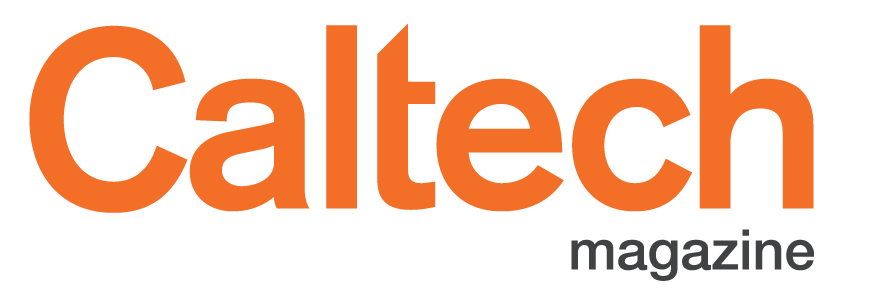New Integrated Core Program Takes an Interdisciplinary Approach to the Undergraduate Curriculum
Caltech lecture hall during a core cirriculum course. Credit: Caltech.
by Andrew Moseman
No science is an island, Paul Asimow (PhD ’97) says.
Asimow, the Eleanor and John R. McMillan Professor of Geology and Geochemistry, has for more than a decade taught Ge 1, the introductory geology course that is part of the core curriculum every undergraduate at Caltech must take. Even at this fundamental level, geology is in conversation with the other sciences students are learning in their core classes. “The way I approach geology, you need to know physics and chemistry and math and biology,” Asimow says. “And the way that instructors like Dianne Newman and Justin Bois teach biology, you need to know chemistry and physics and math and Earth science.”
Core courses are a cornerstone of the Caltech experience, ensuring students acquire a deep foundation in math, physics, chemistry, biology, computer science, and other fields. Because these sciences are not siloed, and because one of the Institute’s signature traits is the ability to share ideas and collaborate across disciplines, the Caltech faculty have begun to think about new ways to approach the core curriculum.
“It seemed to us that building the curriculum around these connections from the beginning would be beneficial,” Asimow says, “instead of coming back to the students during sophomore year and saying, ‘Now, remember there are all these connections between these things.’”
Beginning in fall 2025, the Institute will begin a two-year trial of an “integrated” version of the core curriculum. This integrated core is not a replacement for the traditional core curriculum but an alternative pathway that will run in parallel with the traditional core. It will cover the same material but with a focus on blurring the lines between fields to give up to 24 students per year the option to explore and develop a practice which the faculty say has led to interdisciplinary problem-solving.
Paul Asimow introducing the integrated core.
“If you look at the Caltech faculty, many of us are working beyond the boundaries of our foundational fields,” says Michelle Effros, Caltech’s vice provost and the George Van Osdol Professor of Electrical Engineering. “Often, we crossed these boundaries later in life, but we think that it would be an incredible opportunity for our students to get that training earlier. The breadth and depth that our students get in the core is wonderful. This is a way to provide a deeper sense of how the fields interact and to experience the power of cross-disciplinary thinking right from the beginning of their training.”
The courses in this two-year trial run of the integrated core will focus specifically on the topic of energy, and on how pushing the boundaries between science, engineering, and sustainability can lead to solutions to some of the world’s most pressing challenges. A group of eight Caltech faculty members will teach the integrated courses in this program. Effros notes that this year’s organization around the theme of energy is likely to interest many students; in future years, the theme may change to capture other topics that similarly bring the disciplines of the core together in interesting and timely ways.
Asimow, a member of the integrated core project since its initial brainstorming meeting, volunteered to teach the Earth science portion. He plans to use the topics of carbon sequestration and storage as a way to unite concepts in geology, environmental science, economics, and many other fields.
“It's challenging when students are taught each subject in separation and become accustomed to thinking of a problem as fitting into one of those categories. ‘Oh, this is a physics problem. Oh, this is a chemistry problem. This is a math problem,’” Asimow says. “A lot of problems are science and engineering problems, and you need material that comes from all these different areas to really attack those problems.”
Although the faculty project team considered other topics, energy emerged as an obvious choice for the program’s initial unifying theme, he says. “Everybody has to worry about energy. It's the fundamental currency for everything that happens.”
Justin Bois, teaching professor of biology and biological engineering, is helping to craft the biology portion of the integrated core. As Bois notes, life depends on metabolism, the conversion of energy stored in the chemical bonds of food into a usable form. Even now, Bois’s introductory courses in biology include plenty of physics: from a look at the biophysics at work in the fundamental processes of living cells to an understanding of the optics that allow the microscope in the biology lab to work. Those connections will be emphasized and expanded as part of the integrated core classes.
Because the core is such a foundational part of the Caltech experience, Asimow says, the group has been working with Caltech students to make sure any concerns about the changes are heard. For example, integrated core students will take the computer science portion and the first term of the math portion of the core with the rest of their first-year cohort in part so that they do not feel isolated.
Recently, Caltech sent a letter to the newly admitted class introducing the pilot of the integrated core program and inviting students to apply, with the ultimate goal of creating a group with a diversity of majors, interests, and backgrounds. Applicants will be asked why the program, and its approach to problem-solving beyond the boundaries of traditional fields, appeals to them.
“I was trained as a chemical engineer,” Bois says. “But while I did my PhD at Caltech in chemical engineering, I worked in a biology building — the same one I'm sitting in now, the Broad Center—for a professor who was in applied math at the time. So, I’ve always believed that taking an interdisciplinary approach opens a lot of doors, and it allows you to do really interesting work that you couldn’t otherwise do.”


